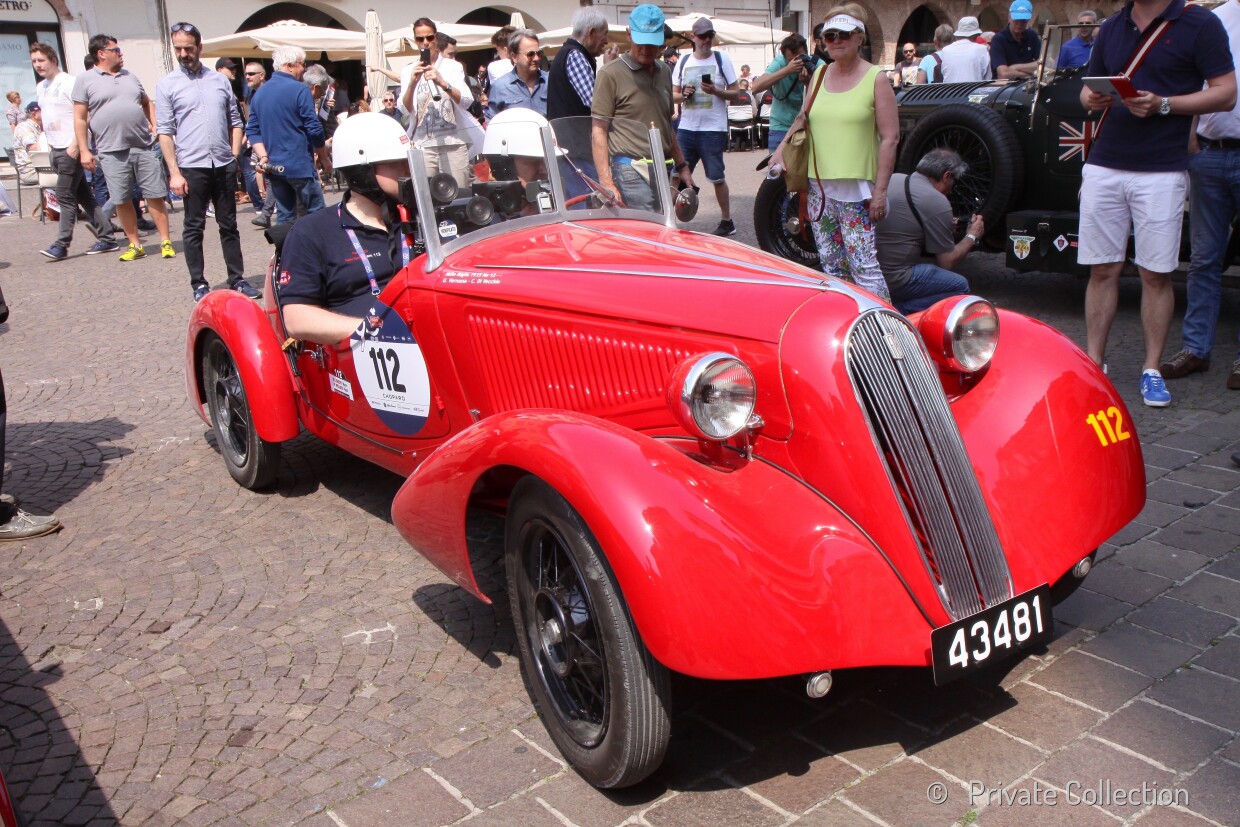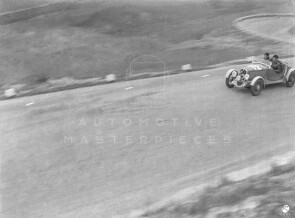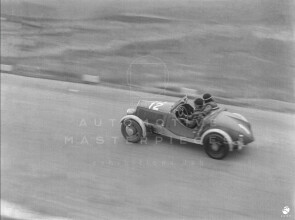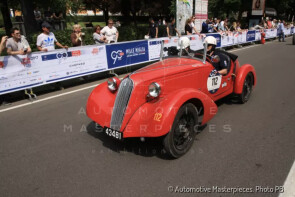
1934 Fiat 508 S Balilla Sport
ON/OFF
Why am I an Automotive Masterpiece?
Launched in 1932, the Fiat 508 Balilla quickly established itself as the car that put Italy on wheels. Developed under the technical direction of Tranquillo Zerbi, with contributions from Antonio Fessia and Dante Giacosa, the Balilla was designed to embody the regime’s ambition of creating an affordable national car. Its release aligned with the Fascist government’s push for modernization and industrial self-sufficiency, aiming to broaden access to mobility and reinforce national pride through Italian engineering. The car’s success stemmed from its low purchase price, modest operating costs, and ease of maintenance—key factors in a country still emerging from postwar economic hardship. Powered by a 995-cc inline four-cylinder side-valve engine producing around 20 hp, the Balilla offered adequate performance for its class. It featured a three-speed gearbox, rear-wheel drive, and a simple yet robust ladder-frame chassis with solid axles and leaf springs, prioritizing reliability and ease of repair. Compact, mechanically straightforward, and affordable, the Balilla became a cornerstone of Italian mass motorization. It was not only popular among private buyers, but also widely used in commercial and institutional roles—becoming a true icon of Fiat’s pre-war production and Italy’s automotive awakening.
The 508 S Balilla Sport, a competition version, was inspired by an original design by Carrozzeria Ghia. The first examples were built on the Fiat 508 Spyder chassis, suitably modified as “tipo corsa” (i.e. racing type), and still bore chassis numbers without the letter "S". In 1933, Fiat officially introduced the sporting version 508 S Balilla Sport, characterized by a lighter, elegant, and attractive body, which soon became a dream car for the younger generation. Fiat acquired the design rights from Ghia and produced two versions: the standard version, known as “Coppa d’Oro”, featured fully enclosed fenders, while the “Mille Miglia” version used lighter cycle fenders and a more lightweight chassis. The engine was also uprated from the standard 36 hp to 43 hp. The Coppa d’Oro version won the Coppa d’Oro del Littorio, from which it took its nickname, while the Mille Miglia version won the 1933 Mille Miglia in the up to 1100 cc Utility Class. Clothed in stylish open two-seater bodywork with a distinctive finned tail, the early "Spider Sport" models retained the crash gearbox of the standard cars but featured a special carburetor. Combined with a raised compression ratio of 7:1, this allowed for a maximum output of 30 hp at 4,000 rpm. In 1934, the second series 508 CS was introduced, improving on this successful formula. It adopted a four-speed synchromesh gearbox and an overhead-valve engine producing 46 hp. The final drive ratio was also modified, allowing for a top speed of 110 km/h. At the time, Siata was already producing accessories and performance parts for the Balilla, making it arguably one of the earliest car tuning companies in automotive history.
Fiat 508CS Balilla Coppa d'Oro with chassis no. 508S043481 took part in the Mille Miglia in 1935 with race number 12 and was driven by Umberto Vernassa (owner) and his co-driver Carlo di Vecchio. Sadly, the Balilla withdrawn before the finish. At a certain moment after the race the body shape of the car was heavily modified. The stories of racing cars are studded with frequent changes for the most varied reasons; modifications are typically made to increase competitiveness, lighten, improve aerodynamics, etc. But just as often the changes follow damage, more or less serious, which the car suffers in the race. This modified shape on the Fiat 508 S, chassis no. 508S043481, is the work of an unknown builder undertaken for an unknown reason.






